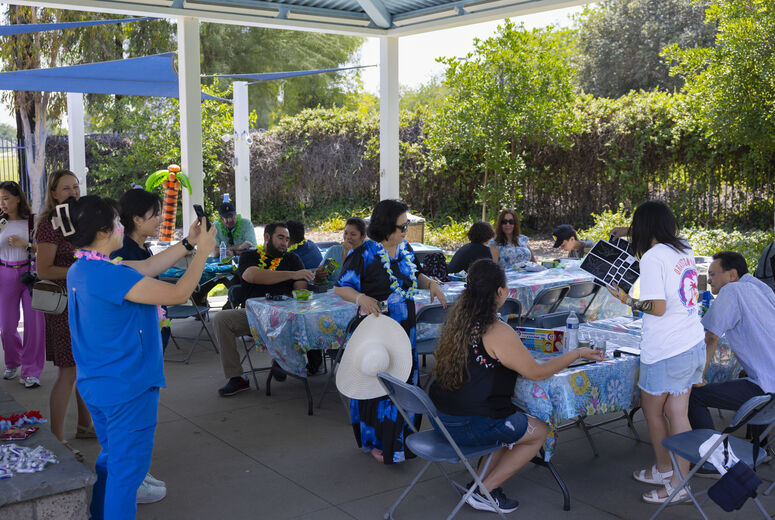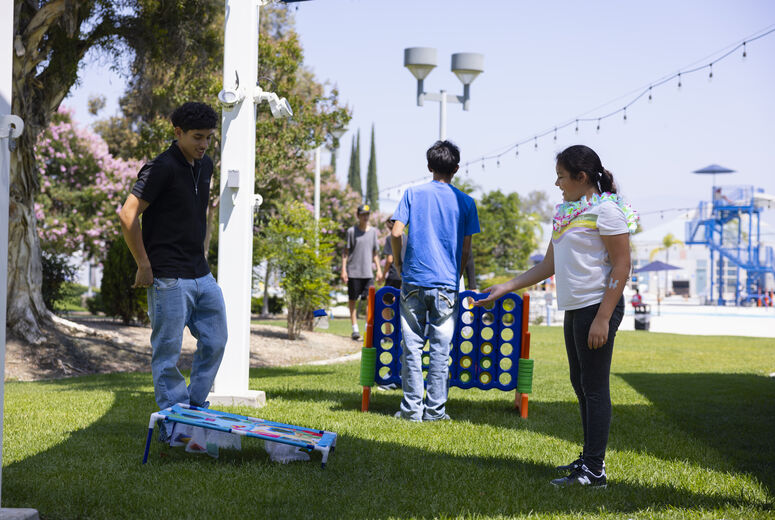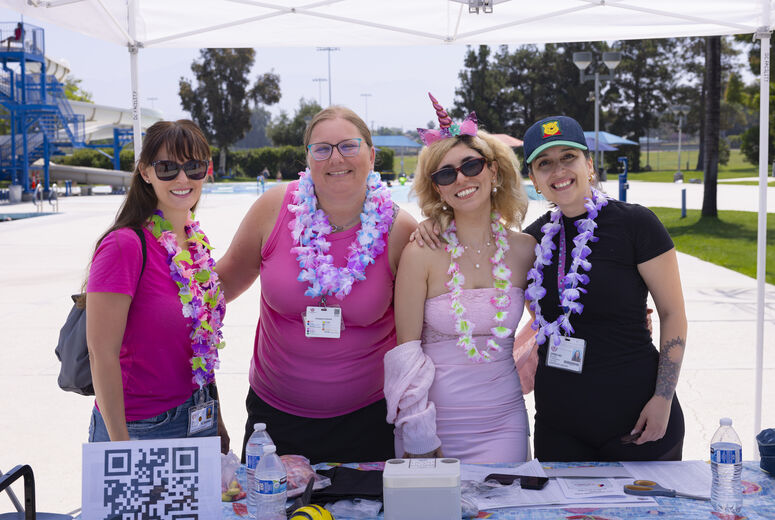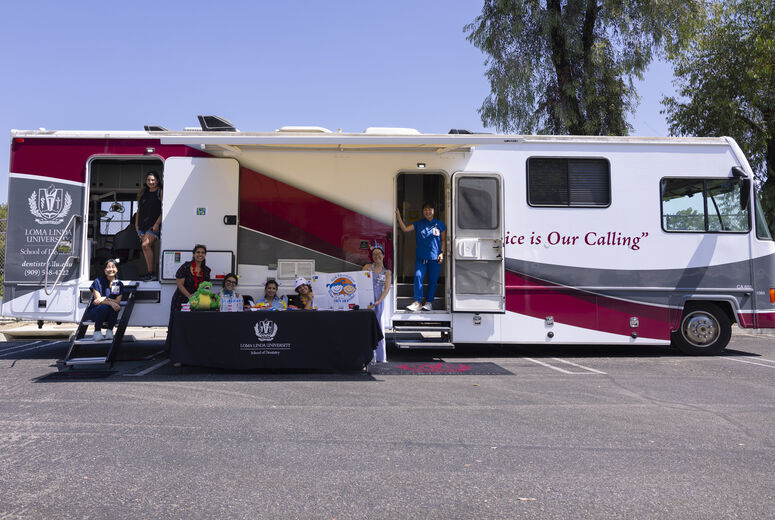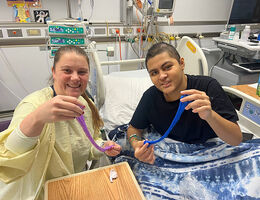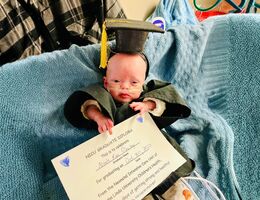
Logan Flores and his mother, Martha Contreras-Flores, at the 15th Annual PNAM Reunion held at the Drayson Center
When Martha Contreras-Flores was seven months pregnant, a 3D ultrasound showed her baby hiding his face. At first, she thought it was nothing. Then, she saw a faint shadow around his upper lip and felt something was wrong.
“I told the ultrasound tech, and she brushed it off,” Contreras-Flores said. “But I knew. I just had this feeling.”
That feeling was confirmed weeks later. Her son, Logan Flores, now 15, was diagnosed in utero with a bilateral cleft lip, an opening on both sides of his upper lip. Specialists couldn’t clearly see his face in the scans. The diagnosis left Martha scared, emotional, and unsure of what was ahead.
Because of the potential heart complications, Contreras-Flores’ OB-GYN referred her to Loma Linda University Children’s Hospital. She delivered Logan there just a few weeks later, via C-section, surrounded by a new medical team and a new sense of hope.
“The care at Loma Linda was night and day,” she said. “They made me feel safe. And when Logan was born, everything changed.”
Logan spent time in the neonatal intensive care unit (NICU), as feeding was a challenge. Because babies with cleft conditions often can’t form suction, Logan needed a specialized squeeze bottle.
“I’d go back and forth to the hospital every day,” she said.
Contreras-Flores family members began working closely with the LLUCH Craniofacial team, a group of pediatric surgeons, dentists, orthodontists, and other specialists who would oversee Logan’s care for years to come.
That’s when they met Jung-Wei Chen, DDS,MS, MS, PhD, Chair and Program Director of Pediatric Dentistry at Loma Linda University School of Dentistry. She introduced them to a device known as a PNAM, Pre-surgical Nasal Alveolar Molding appliance. It’s a retainer-like device worn by infants with cleft lip and palate to close the gap between lips, gums and nose before surgery.
“Dr. Chen explained everything so patiently,” said Contreras-Flores. “When she held Logan, he’d stop crying. She was a blessing.”
Logan wore the PNAM for 13 weeks before undergoing his first surgery at three months old to repair the cleft in his lip. A second, more extensive surgery was performed at nine months to repair his palate and insert ear tubes.
“He didn’t want anything but water for days after the second surgery,” Contreras-Flores said. “But it was worth it. You look at him now, and you wouldn’t even know he was born with a cleft.”
Now a thriving sophomore in high school, Logan enjoys working out, playing video games, and hanging out with friends. Despite the challenges of his early life, he says his cleft condition has never held him back.
“My friends and family were always supportive.”
That support, he said, gave him confidence. His message to other kids going through similar journeys? “Live life to your fullest potential,” Logan said. “Try your best and be the best version of yourself.”
He plans to graduate from high school, make his parents proud, and maybe join the military or attend trade school.
Whatever the path, Contreras-Flores said she’s already proud of the young man he’s become.
Loma Linda’s craniofacial team follows children from birth through adolescence, helping address not just physical repairs but speech, hearing, and emotional health.
Chen, who made PNAM therapy widely available to the Hospital in 2009, has been a driving force in advancing care for cleft patients, especially those with disadvantaged socioeconomic status.
“It allows us to close the gap before the corrective surgery,” Chen said. “We’re not going for a quick fix; we want the best long-term outcome.”
The therapy doesn’t just improve surgical precision; it also supports better feeding and bonding. Weekly appointments for PNAM adjustments offer families consistent, in-person support, something Chen says is especially important for new parents grappling with postpartum depression or guilt.
The LLU School of Dentistry now hosts regular reunions every 5 years for cleft patients and their families, offering a space where children can meet peers who share similar experiences.
“These reunions are more than a celebration. They provide a sense of belonging. Older patients become a mirror for younger ones, and parents connect in ways that build a support network.
July is National Cleft and Craniofacial Awareness Month, a time to recognize the 1 in 700 babies born with a cleft condition each year in the U.S. These congenital differences can affect the lip, palate, and face. While they can be diagnosed before birth, ongoing treatment often extends into adolescence.
Loma Linda University Children’s Hospital offers specialized care to guide families through every step of the journey from diagnosis to surgery and beyond. For more information about the Craniofacial Team, please visit online.
Loma Linda University Health hosted its 15-year reunion for cleft lip and craniofacial patients, a heartwarming event filled with games, reunions that brought together former and current patient families, and a mobile dental clinic on Sunday, July 13. Click through the photos below to see the PNAM 15-year reunion.

